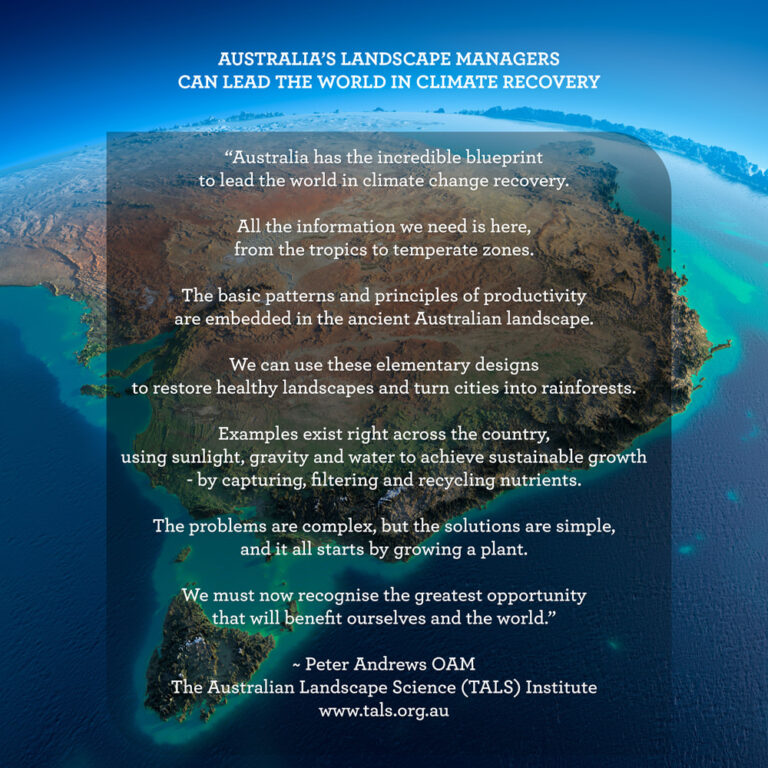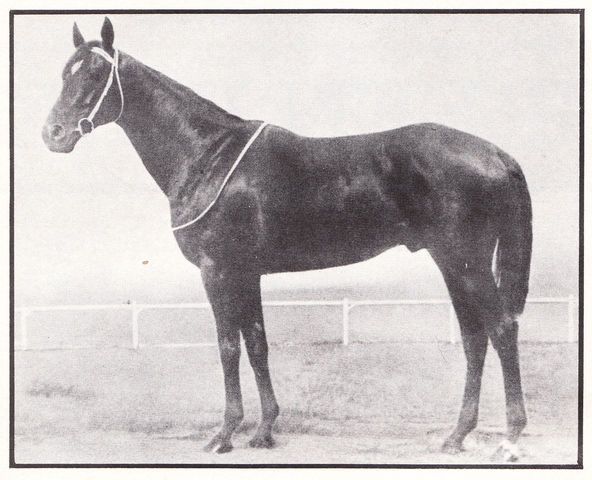Back in 2005, like many other Australians, we sat with fascination through two consecutive Monday nights of an ABC Australian Story double episode titled Of Droughts and Flooding Rains. We did not realise this was the beginning of something. But we knew the first week that it was deeply moving and we were inspired to make darn sure we didn’t miss that second week.

Why was it so fascinating? For us, there were surprisingly personal connections. The story of Peter Andrews OAM began in Broken Hill – and we have family there. Our family has always held a special pride for a station my uncle and cousins used to own up that way. We’ve all visited and been astounded by the Outback pastoral and channel country’s immense expanse and simultaneous harshness and spiritual beauty. The stories of the country and the efforts to both work with the land and to ‘drought-proof’ it are something of a legend in our family. So hearing Peter Andrews explain how he learned to read this landscape with such profound intuition and clarity based on what ought to be there rather than only what is, was both amazing and humbling.
And then there was the horses. Horses are the centre of our lives. My first competition horse was a grandson of Rain Lover, the dual Melbourne Cup winner whose grave is at Tarwyn Park, the property featured in the ABC program.
I was always very proud of my beautiful horse’s pedigree, and here I discovered that great horse lived out his days on a farm that had been regenerated expressly for equine health – when so many of our ‘usual’ role models are farms that have been repastured for cattle which have vastly different health and nutrition requirements. We loved Peter’s explanation that some horses are ‘indicator horses’ – they provide early warning when something is off nutritionally. My current beloved Warmblood is just such a horse, totally sensitive to everything but in a world that doesn’t usually value such traits. It was amazing to see someone who recognised the same things in horse health and responses that we did, but who had been able to apply that knowledge at a whole-of-herd, and whole-of-farm scale.
So all in all, here was a story that bound together several historical and topical aspects that were personally fascinating to us, with an unbelievable story of successful drought resilience that the helicopter vision made indisputable. With a background story of incredible persistence, devotion to a cause, and being willing to work against the tide.
Now, there were contentious points. All those willows. And harvesting thistles! But we were enthralled. The results were just incredible. And as you can read in another post, we had plenty of prior experience in the lack of results more conventional native-plant-only regeneration efforts can have. So we were hooked.
Without further ado, I found some time to get to my local ABC Shop, and purchased Peter’s first book – Back From The Brink. I devoured it and shared each new insight with the family. There was one big breakthrough statement for me, as a former native-plant-only devotee (I had even started collecting info to write a book on gardening with only native plants!). Peter’s insight about willows literally made me pause and put the book down to think with some astonishment.
Most people think willows grow where there is water…but what if the reality is something quite different:
What if there is Water where there are Willows!
What if Willows actually create standing water??
To me, this sums up the whole philosophy. Peter thinks differently. He observes, and removes assumptions, to create a blank canvas for considering the landscape hypothesis. So as a land manager – what a great question! What if you get MORE standing water if you plant willows? Because they CREATE free water, rather than USING it as we assume.
Now, we found this whole new approach hard to work with based on just my enthusiastic summaries as the reader of the family. So next step was to buy the CD audio-book version of Back From The Brink. This fit our family better, and those CDs brought all of us onto the same page. We shared them and the book with anyone who was interested. And we talked endlessly about what to do about all this.
I turned online. I found the Natural Sequence Farming websites and chat forums and participated when and where I could. Like most of us – we are busy. We hold full-time jobs as well as run our little piece of equine paradise and the associated enterprises. We ran school drop-off and after-school activities like all families do. Our farm isn’t on a big floodplain so we couldn’t see an immediate like-for-like plan. But we schemed and talked and thought.
When Beyond The Brink was released in 2008, it was straight into my Christmas stocking and what a wonderful refresher for our enthusiasm and inspiration. The ideas were bigger, bolder and full of hope with their landscape-scale offerings – something that was starting to be desperately needed as the full impact of Climate Change and the Murray-Darling straits were starting to dominate the public discourse. Our need to act surged, to do something rather than keep talking and planning.
From 2008 it took a further two winters for us to work out exactly what to do. We cross-checked back to the books repeatedly, as well as alternate systems like permaculture and organics and biodynamics. That period of learning the theory was invaluable. We encourage everyone to find the time – use the audio books, and add little sticky notes through the book so you can find important insights easily next time you’re checking things. Managing water and soil the Natural Sequence Farming way is a new paradigm, and it doesn’t all gel easily in your head when you start.
So how did we get started actually making changes on our farm? Our epiphany on HOW to get started came in the summer of 2010. But course that’s another story 🙂






